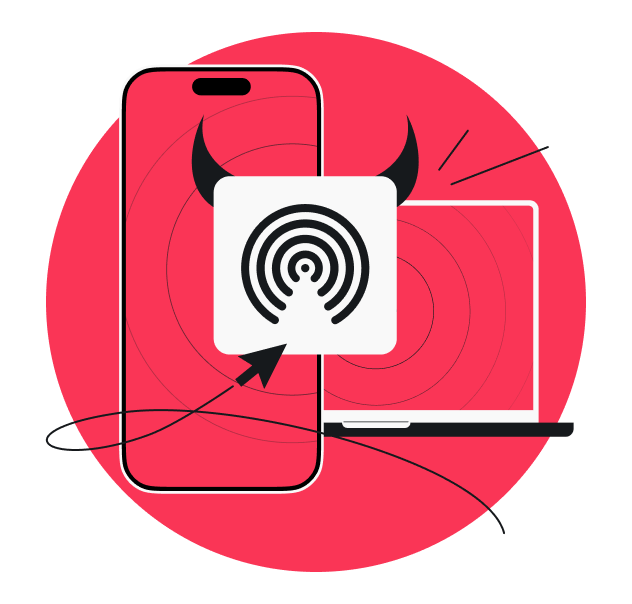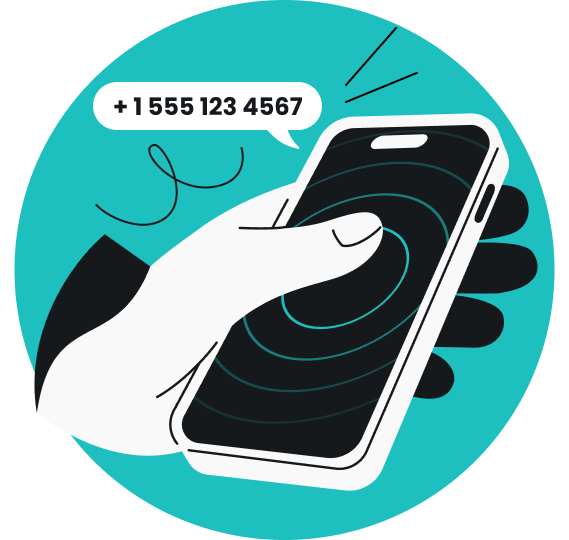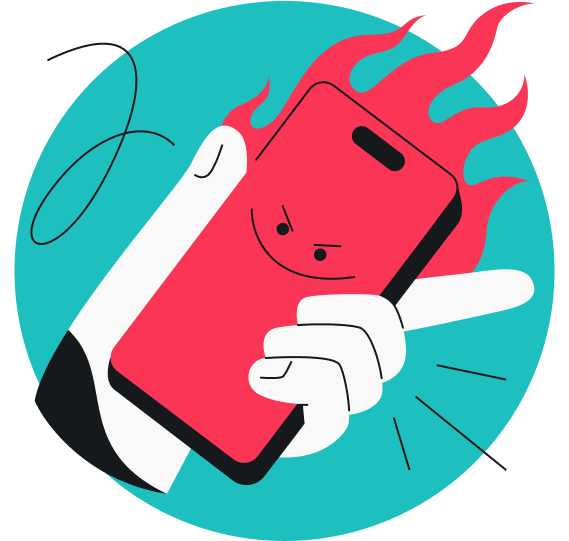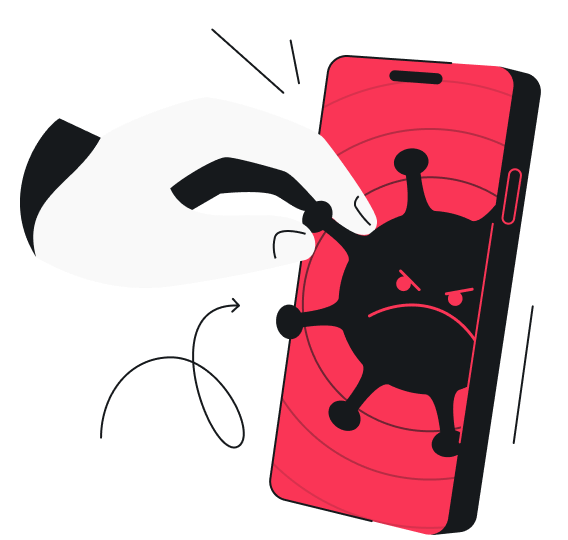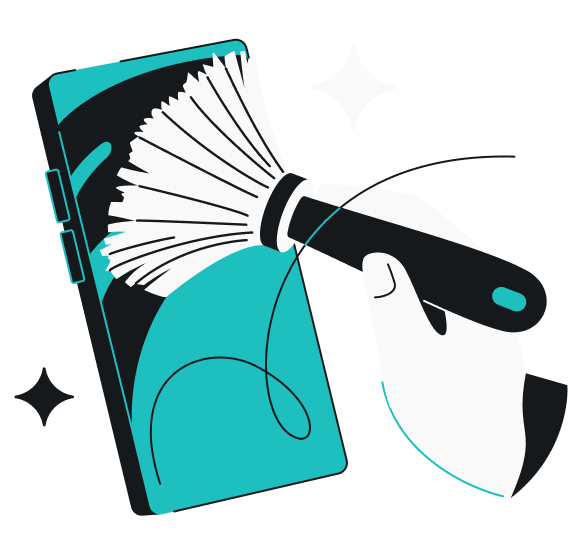If you’ve received one spam call too many, there are four effective ways to cut down spam and sales calls: putting your number on a do-not-call registry, tweaking your phone settings, using your carrier’s spam-blocking solutions, or trying a third-party app.
But why do these spam calls keep coming, and what are the risks of picking up? Read along to find the answers.
Spam calls defined
A spam call is an unsolicited phone call, usually coming from telemarketers, fraudsters, or automated systems (aka robocalls). The intent of a spam call is to advertise products and services, collect personal information, and even scam. Spam calls can be annoying and disruptive, targeting large numbers of people with deceptive tactics.
Spam calls are typically defined by their high volume and irrelevance to the recipient, as in the case of Dynata phone calls.
To help protect their users from spam calls, carriers often flag suspicious numbers by labeling them as “Spam” or “Scam Likely” on caller ID.
Note: the term spam comes from a hilarious 1970s Monty Python sketch in which two café customers try to order breakfast from a menu that includes Spam in almost every dish, and the overwhelming repetition of Spam frustrates one of the customers. The idea of repetitive, unwanted content was later applied to unsolicited communications.
Proven ways to block spam calls
If you’re a US citizen, you can register your number on the National Do Not Call Registry by visiting donotcall.gov or calling 1-888-382-1222 (voice) or 1-866-290-4236 (TTY).
Some other countries have similar do-not-call lists, which allow you to register your personal number and opt out of telemarketer calls. So make sure to check if such a service is available in your area.
To stop spam calls, you can also:
- Download a call-filtering app;
- Use your mobile carrier’s spam call blocker;
- Block unknown callers on your device;
- Get a new number;
- Get a US virtual phone number.
Most spam calls come from marketers and scammers who use robocall software. These auto-dialing tools allow them to make tons of calls at once, usually with pre-recorded messages.
Let’s take a closer look at how you can put a stop to spam calls, or at least significantly reduce them, on iPhones, Android phones, and landline phones.
Fix for iPhone users
The easiest way to stop further spam calls on your iPhone is to simply block the numbers of spam callers. This will not only block unwanted calls but also stop spam texts and FaceTime calls.
Follow these steps to block the spam callers on your iPhone:
- Open your Phone app, go to Recents, and click the info icon next to the spam caller’s number.
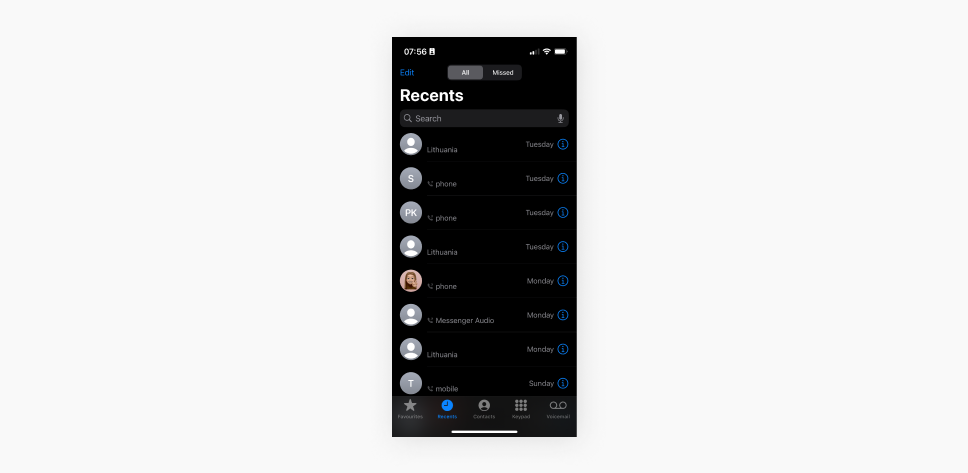
- Tap Block Caller and confirm by tapping Block Contact.
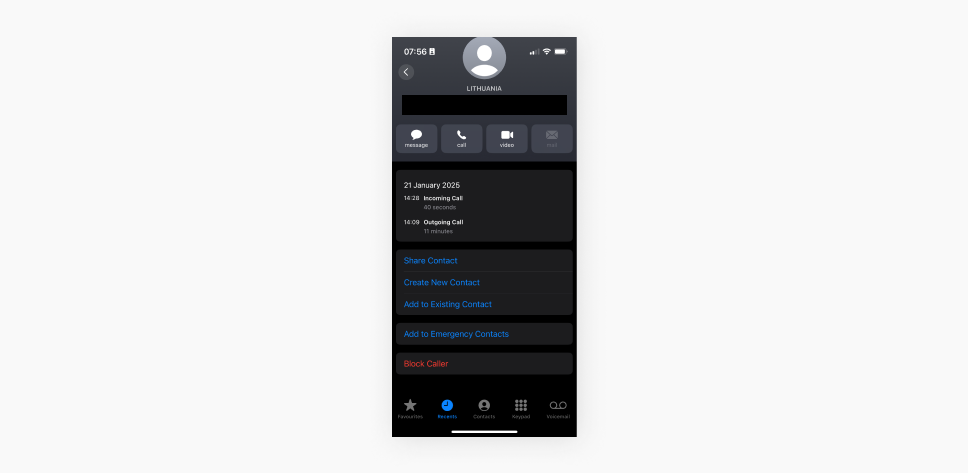
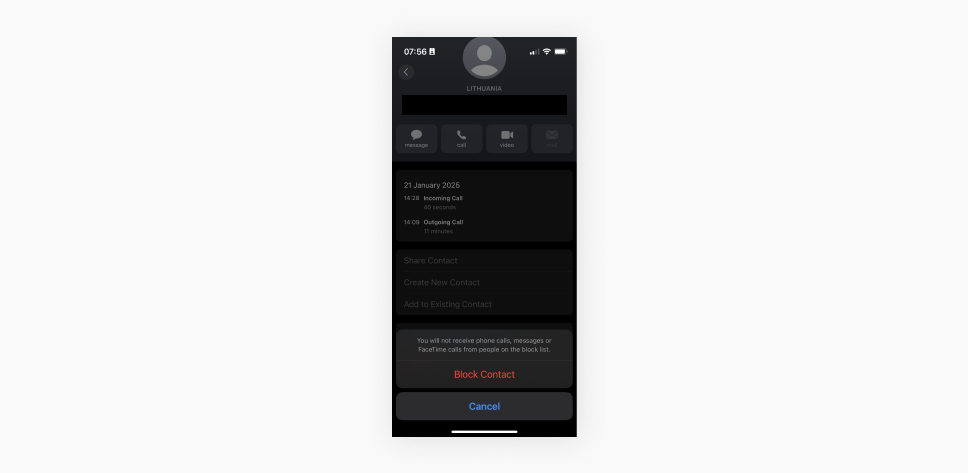
There is another option on iPhones — Silence Unknown Callers — that allows you to block all unknown numbers. With this feature on, all calls from numbers that you’ve never interacted with or don’t have in your contacts list will be silenced and sent to voicemail. This is especially helpful against area code spam calls that rotate multiple numbers.
How to enable Silence Unknown Callers on iPhone
There is another option on iPhones — Silence Unknown Callers — that allows you to block all unknown numbers. With this feature on, all calls from numbers you’ve never interacted with or don’t have in your contacts list will be silenced and sent to voicemail.
Follow these steps to enable Silence Unknown Callers:
- Go to Settings > Apps > Phone.
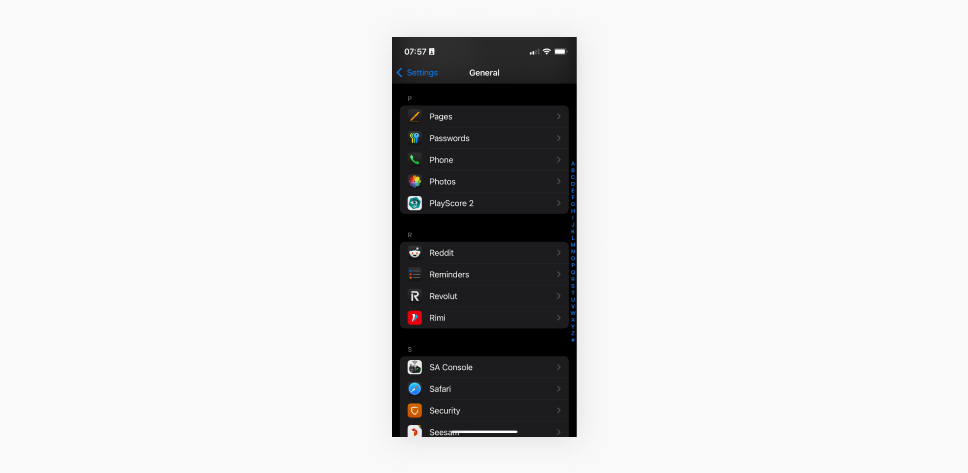
- Tap Silence Unknown Callers and toggle on the setting.
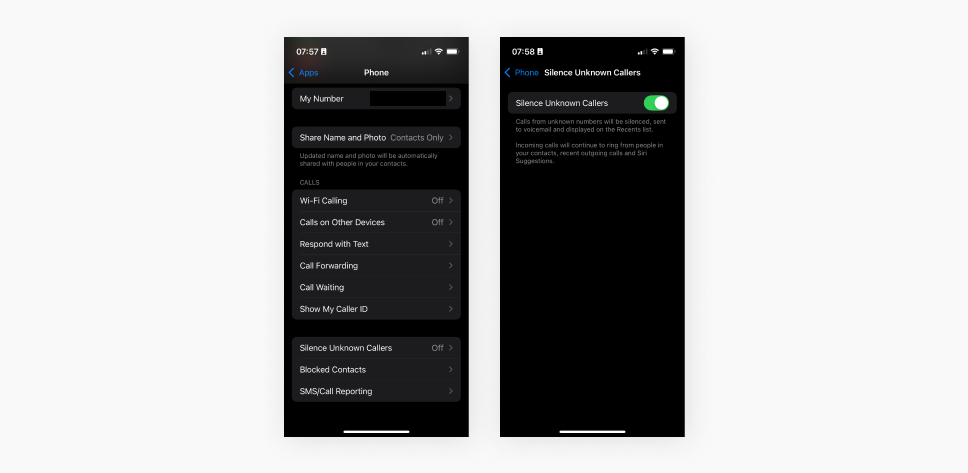
Fix for Android users
There are two easy ways to block unwanted calls and texts on Android — marking a specific mobile phone number as spam or enabling caller ID and spam filters.
If you want to block individual numbers on Android, the process will look something like this:
- Go to the Phone app, open the Recent calls tab, and click on the phone number you want to block.
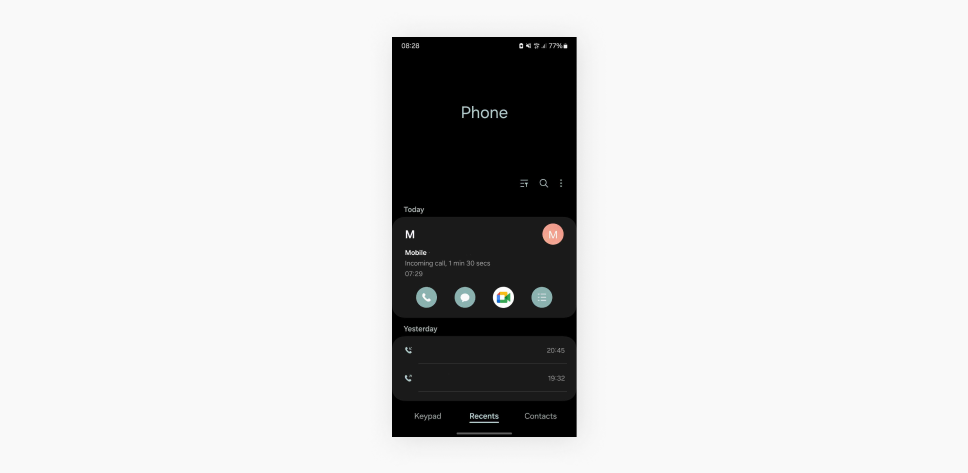
- Tap on the menu icon and click Block.
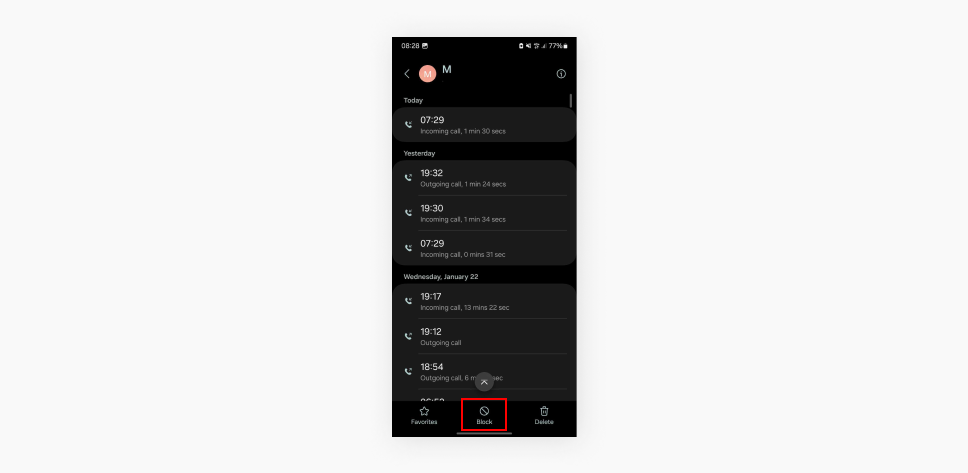
If you have Google Dialer as your Android’s default phone app, there should be a feature — Caller ID and spam protection — that filters out unwanted calls.
How to turn on Caller ID and spam protection on Android
If you have Google Dialer as your Android’s default phone app, there should be a feature — Caller ID and spam protection — that filters out unwanted calls.
Follow these steps to turn on Caller ID & spam filter on your Android:
- Open your Phone app, tap on the menu icon, and choose Settings.
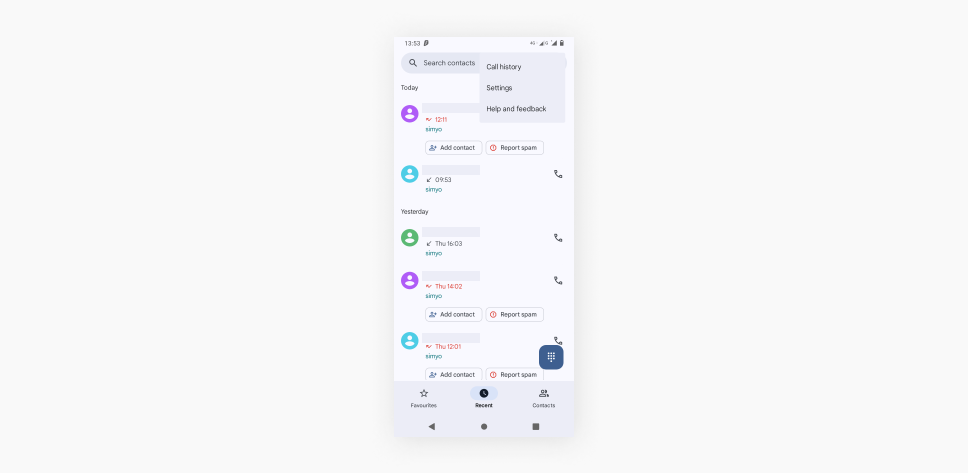
- Look for Caller ID and Spam or Block Spam Calls and tap it.
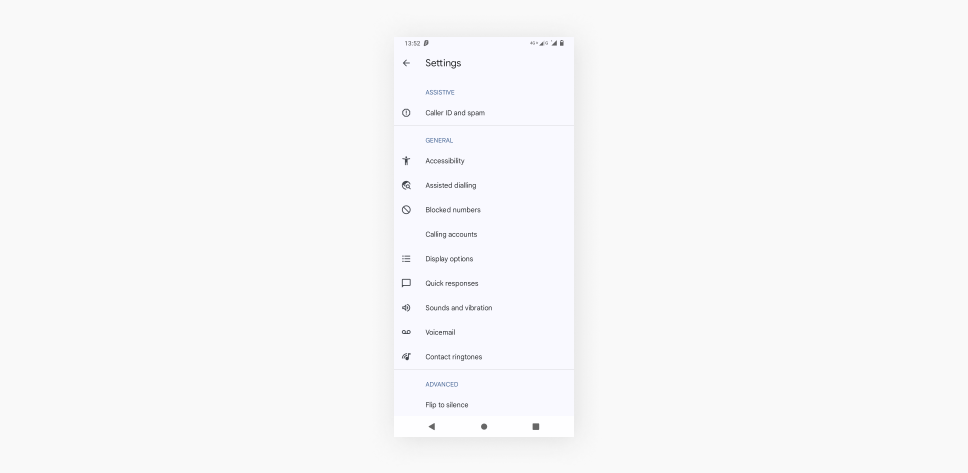
- Toggle on settings like See caller and spam ID and Filter spam calls. If prompted, grant permissions and confirm.
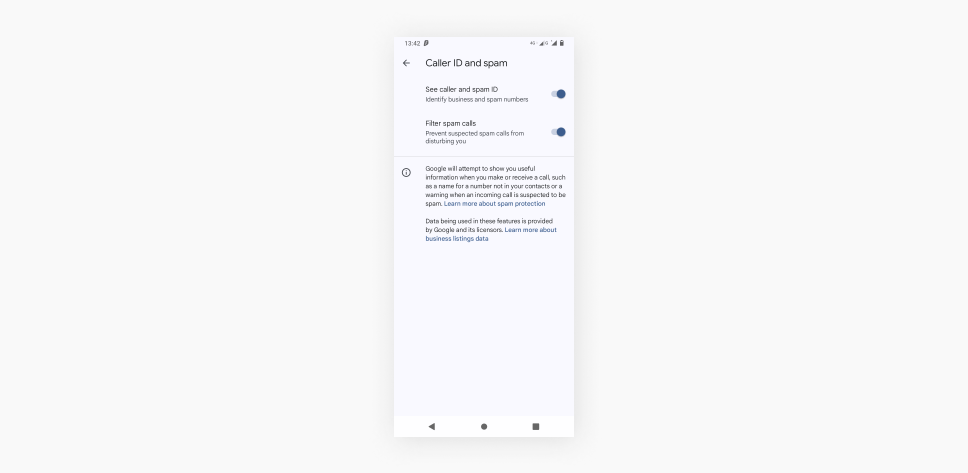
Stop spam calls on landlines
Registering your number with the National Do Not Call Registry can reduce telemarketing calls, but it won’t protect you from scammers or overly aggressive, dishonorable marketers. However, you can try the following methods to stop unwanted phone calls on your landline:
Change your number
Consider changing your number and only sharing it with trusted contacts, such as your family, friends, doctors, and financial institutions;
Block numbers
You can block the number after receiving a spam call. In the US, dial *60 on your receiver and follow the instructions to block a specific number. To block the most recent caller, dial #01#;
Install a robocall blocking device
You might want to use a robocall blocking service for your landline. These services act as call filters — when someone calls, they won’t hear the regular ringing but will be asked to press a number to connect. Since robocall software can’t do that, these calls won’t reach you.
Prevent spam with Alternative Number
If you want to avoid getting spam calls on your regular number in the first place, use a secondary virtual phone number so you don’t have to give out your main one. Surfshark’s Alternative Number is a great option.
You could use it when:
- Sharing a number with services and businesses;
- Signing up for online services, apps, newsletter subscriptions, listings, promos, etc.;
- Doing anything else that might expose your real number to potential spammers.
All calls and text messages to your Alternative Number will be forwarded to the Surfshark app on your phone. If the spam calls get too excessive, you can pause the number on the app or generate a new one altogether.
Alternative Number is a paid add-on to the broader cybersecurity suite you get when subscribing to Surfshark. All plans include tools like VPN and Alternative ID that help you not only avoid spam calls and emails but also protect your identity and overall privacy online.
But it doesn’t end here — enrolling with Surfshark has even more advantages.
Subscribing to Surfshark’s top-tier plan gives you access to the Incogni data removal service. This comes in very handy if your primary phone number has already ended up in the hands of marketers. Incogni finds data brokers that have your information and contacts them on your behalf, demanding to remove your data from their databases.
Alternative Number, alongside other Surfshark security tools, allows you to protect your personal information and stay ahead of spammers.
Spam call triggers
One major reason for receiving a lot of spam calls is data leaks. They occur when companies that store user information experience a data breach, allowing hackers to steal and sell that info on the dark web. Scammers buy the leaked data, including phone numbers, in bulk and use it to target huge volumes of people, hoping some of them will answer and fall for their schemes.
However, data leaks aren’t the only way spammers can get your number, and there are more reasons you might be targeted:
Your number is visible on social media
If your number is listed on your social media, it can be easily found by scammers who comb through profiles for potential scam victims;
You unknowingly engaged with a scammer
You may have replied to a phishing text or clicked on a link in a spam message, alerting scammers that your phone number is active and making you their potential target for scam calls;
A service you signed up for shares information
Some services require you to provide your phone number during the sign-up and later might share your details with third parties, including telemarketers;
You’re reusing an old number
Your current number might have belonged to someone who ended up on spam or scammers’ lists, and you’re getting calls aimed at the previous owner;
Your number is on a robocall list
Scammers and marketers use automated robocall systems to call thousands of phone numbers at once, reaching as many people as possible.
Understanding why you’re being targeted for spam calls can help you minimize the interruptions and protect yourself.
Spam call risks
Receiving a spam call isn’t innately risky, but answering one can potentially expose you to several dangers. Here are some of the most common risks of answering spam calls:
Higher phone bill
You may be charged for incoming calls, especially if they come from overseas numbers;
Increased targeting
Answering a call indicates your number is active, making you a perfect target for future spam or scam calls;
Voice recording
Scammers can record and use your voice for other scams, such as fraudulent audio authorization.
Additionally, there are less frequent but more serious risks of falling for a scam during a spam call:
Identity theft
Scammers can impersonate trusted organizations to manipulate you into sharing sensitive information like your Social Security number or bank account details;
Hacking
Using different phishing techniques, such as posing as tech support or customer representatives, hackers can trick you into revealing your login credentials for your online accounts.
Stay ahead of spam calls
Blocking spam numbers is important and can effectively fight unwanted calls, but you should take other precautionary measures, too. You should remove your phone number from social media profiles, be mindful of who you share it with, and consider using a data removal service like Incogni to eliminate your number from data broker databases where spammers source their lists. Additionally, consider using an alternative number service — like Surfshark’s Alternative Number — to protect your primary number from ending up in spammers’ hands in the first place.
FAQ
How do I stop spam calls permanently?
While it’s impossible to stop spam calls permanently, you can reduce their frequency significantly by following these steps:
1. Block spam numbers.
2. Report unwanted calls.
3. Don’t answer calls flagged Spam or Scam Likely.
4. Use call-blocking services.
5. Use a secondary number like the Alternative Number service.
6. In the worst-case scenario, get a new phone number.
Why am I getting so many spam calls all of a sudden?
There are a couple of likely reasons as to why you’re getting a surge of spam calls:
1. A data broker has recently sold your personal details (including your phone number) to telemarketers;
2. A company you’ve provided your details to has experienced a breach, and your contact number was compromised.
How do I remove my number from the spam list?
To remove your number from telemarketer lists, the FTC (Federal Trade Commission) suggests registering it with the National Do Not Call Registry by calling 1-888-382-1222.
To minimize spam even more, you can also use services like Incogni to remove your personal information from various data brokers’ databases.
What happens if your number is reported as spam?
If someone reports your number as spam, it might automatically get blocked on the phone from which it was reported. In this case, your attempts to reach the number again will likely be sent straight to voicemail, often to a designated folder for spam and blocked calls.
If enough people report your phone number as spam, your carrier or spam-detection services might flag it as suspicious, potentially leading to carriers or spam filters blocking your number altogether.



